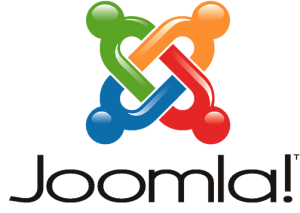
Purpose of a CMS (Content Management System)
As the webmaster of a busy website you will be familiar with the process of updating the content of your website on a regular basis, regardless of how you achieve this. Some websites are still based around the static HTML model which means that a website must first be modified on a desktop computer using website design software before the modified pages are uploaded the hosting server, often through FTP although there are other methods of file transfer available. The process of modifying a static website can be time consuming and there is always room for error that could impact on the design or layout of the website; CMS (content management systems) systems have been developed to improve the way in which webmasters manage their websites by only allowing the modification of content and no code. A CMS can be seen as offering webmasters and web developers benefits such as:
- The application that will run the core of your website is solid and well tested; all you need to do is perform a professional installation and install a theme that matches the design of your business and you are set to go
- There are a number of plug-ins available for popular open-source applications, such as Joomla, that can be used to add additional functionality to the application and improve your overall experience as a webmaster.
Joomla is a popular PHP and MySQL based CMS that is one of the most advanced platforms available for developing a website on, having been developed to be a CMS from the start whereas WordPress, another popular platform, is better served as a blogging application. As PHP and MySQL are technologies supported by both Windows and Linux, any web hosting service from Host.co.in can provide you with the features necessary to run an effective installation of Joomla.
Installing Joomla
Host.co.in offers a software management application with our Linux shared web hosting plans called Softaculous; this can be used to install a number of popular web applications, including Joomla, in your web space in just a few clicks and saves you the time and hassle of having to setup databases and the correct permissions. If you are using any other form of hosting then you will probably need to investigate other installation methods that are available and suit your hosting environment.
For the most part the manual installation of Joomla is a simple procedure that consists of the following steps:
- Download the latest version of Joomla from the software’s official website, located at www.joomla.org
- Unzip/untar the package that you have downloaded to your desktop
- Login to your web hosting account using FTP or any other method of file transfer
- Upload the contents of the unzipped/untarred file to your web space
- Login to your web hosting control panel and create a new MySQL database for your website
- Navigate to your website or the directory on your website in which you have installed Joomla where the Pre-installation Check screen should be visible; following the installation steps and you should then have a fully working Joomla installation at the end.
If you require assistance with the installation of Joomla then Host.co.in’s 24×7 support team can assist you with the installation process if necessary. Our highly knowledgeable staff can perform a clean and professional installation for you at no cost.
Themes and Plugins
Like a majority of third-party applications that are designed for open source use, Joomla has large repositories of themes and plugins for you to choose from that can be used to provide your website with a fresh new design and to extend the core functionality of the application. There are of course APIs available for you to develop your own themes and plugins if you are an advanced user with knowledge of the PHP scripting language, so even though you are going to be basing your website on a third-party application, there is a lot of room for customization.
Creating a theme that is consistent with your business’s branding is an important aspect of developing a web presence because you want your website to stand out to your visitors as being your brand. Developing a theme for Joomla will require knowledge of CSS and HTML as well as a slight bit of PHP so that you can create an effective layout. If you feel that you don’t have the skills required for this then you can always use one of the freely available themes.
Even though Joomla is one of the most feature-rich web applications available, there may be something that you’re looking for that it doesn’t appear to have. Such thoughts can be remedied with the addition of plugins to create new features for Joomla that aren’t part of the core of the software. In order to create effective and stable plugins it is necessary for you to be competent with the PHP scripting language as your code will need to be secure, but also function correctly with the rest of the application.